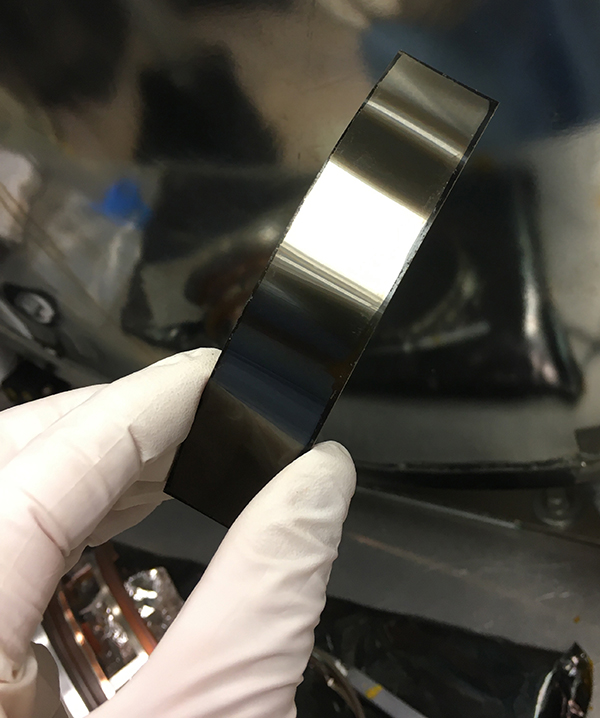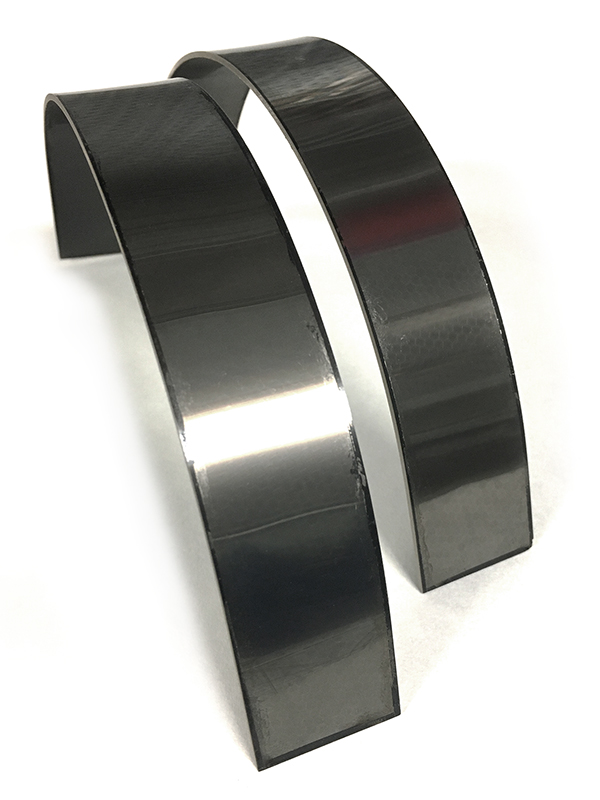
Device for Analyzing Deep Space Could Detect Tumors, Air Particles
Subheadline
A NASA-funded curved microchannel plate is now available for medical uses, air analysis, and nuclear waste detection
An improved version of a device that enables scientists to study the hot matter in remnants of exploded stars and distant galaxy clusters is now available for earthly uses.
NASA-funded curved microchannel plates can perform faster and more accurately than traditional flat microchannel plates, which are used in a variety of space agency instruments, including plasma particle analyzers, mass spectrometers, and the High Resolution Camera of the Chandra X-Ray Observatory, which captures information about the composition of faraway exploded stars.
The incredible detail the Chandra High Resolution Camera can pull from faint sources – akin to an ability to read a newspaper from half a mile away – comes from two 4-inch square microchannel plates that contain tens of millions of tiny tubes that multiply the electrons released when the instrument is struck by X-rays.
“In other words, a microchannel plate can amplify the impact of a single particle or photon, making its detection possible,” explained Nikolaos Paschalidis, chief technologist at NASA’s Heliophysics Science Division at Goddard Space Flight Center in Greenbelt, Maryland.
Because this technology has proven so useful to NASA, the space agency has taken an interest in a specific innovation: curved microchannel plates developed by Incom Inc., a producer of glass and polymer microstructures in Charlton, Massachusetts.
In traditional microchannel plates, the many millions of tubes are arranged in one fixed orientation, parallel to each other, on a flat plane. But nature is three-dimensional, so special optics are required in instruments to fully map natural space.
Incom’s curved microchannel plates – developed with NASA funding from a handful of Small Business Innovation Research contracts between 2015 and 2021 and now available for sale – address this problem with tubes that can be arranged on a cylindrically curved plate.
Curved microchannel plates can be fitted onto instruments more efficiently, enabling them to amplify particles faster and more accurately. They also take up less space and weight, which is critical for both spaceflight and equipment on Earth.
Flat microchannel plates on Earth are used in instruments for analyzing air composition and detecting airborne formaldehyde, for example. They may also be used in PET scanners to detect and analyze tumors, helping doctors determine whether or not to operate.
“Many applications using flat microchannel plates could improve by using curved microchannel plates that fit the natural geometry of the instrumentation better,” said Mark Popecki, a senior research scientist at Incom.
Incom is also working with the Department of Energy to put these microchannel plates in devices that detect nuclear materials that could be associated with nuclear waste, or even nuclear reactors, Popecki said.
NASA’s Paschalidis noted that flat microchannel plates have developed over the past 50 years or so, while curved ones are in their infancy. “There’s room to evolve for improved gain, imaging uniformity, aspect ratios, and geometries,” he said, adding that NASA will continue developing and funding research on this technology.


Supported by NASA SBIR funding, Incom has developed curved microchannel plates, like the ones pictured here, which can fit directly onto instruments – such as cameras, spectrometers, air analyzers, nuclear detection devices, and PET scanners – to improve performance and efficiency. Credit: Incom Inc.

NASA uses flat microchannel plates in a variety of instruments, including the Chandra X-Ray Observatory’s High Resolution Camera, which captured data for this image of the Cassiopeia A supernova remnant. Credit: NASA/CXC/SAO













